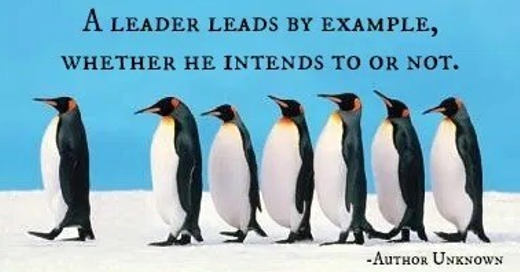Staying Ahead of the Chaos

Here we are in May – the time for graduations, weddings, sports tournaments, and Memorial Day. The time when my schedule can seem overwhelming and non-stop. Mostly because the personal invades my professional time. Why when they overlap does my stress level spike?
A recent survey I read said nearly ¾ of leaders are already stressed out. And this same survey mentioned that 70% of senior leaders admit that burnout and stress affect their ability to make decisions. Yikes, not good!
Being stressed out not only affects your ability to make strong business decisions but it affects your health, it affects your attitude, and it affects your productivity.
Back in January I was working on my 2024 goals. I realized that I needed to be gentle to myself. Even when I think I should be pushing, hustling, or striving – how can I be gentle with myself and let go of the guilt? That negative Nelly in my head needed to take the year off. As a business owner not only do we have that annoying Nelly ragging on us, but we have employee requirements, client needs, and piles of work that needs to get done to keep our bank accounts at a healthy level. Here are some tips and tricks I personally use to stay above the stress and chaos and to balance the professional with the personal commitments.
- Know your body’s stress signals – Paying attention to your body is the first step in reducing stress. Does your heart race? Do you get antsy or fidget a lot when stressed? Do you get irritable? For me either my foot starts moving a mile a minute or I get blotchy. I know if I am feeling stressed and upset, I can feel my core heat up and the rash and blotches run up my neck. It is sooooo attractive, but when it happens, I know I need to take a few minutes, remove myself from the situation, and breathe. My body tells me even when my head tries to ignore it.
- Get enough sleep – sounds easy right? Nope, I can tell you from experience it isn’t always simple. First you have to discover how much sleep your body needs and then honor that amount. Arguing with your body isn’t going to change the fact that you need at least 7 hours of sleep. And I don’t know about you, but I can’t pull off less than 7 hours of sleep anymore. I have NO idea how I functioned for years on 4 hours a night. Because I get up at O’Dark-Thirty my bedtime is earlier than anyone else in my household. It meant a few weeks of experimenting with schedules, buying an eye mask (so the light doesn’t bother me as he sits there and reads) and sometimes ear plugs when the football game is still on. In order to be your highest, most productive self, you need to take care of YOU first. Start with sleep.
- Move your body – we all know exercise is good for us, but moving your body can reduce your stress levels and help you breathe. Remember that cold snap we had back in January?! (Brrr!) It was so dang cold I didn’t do my long walk every morning. So instead of feeling guilty about that, I walked around the building at work whenever I had 10 minutes to spare. Try not to make exercise an all or nothing thing. I struggle with that constantly, but I do know that any movement is better than none. Do things that you enjoy. Exercise should be fun, not a chore. Loved roller skating as a kid? Try it again. Ride your bike with abandon, not determination. Skip, jump rope, and try that yoga studio up the street. Find something that makes you forget you are doing something healthy for yourself.
- Create boundaries not barriers – Where to begin? Go through your page long to-do list and create priorities. Be truthful about what you must get done vs. what you would like to get completed. Decide what is non-negotiable and start there. I also schedule time for personal “odds and ends.” Having time on my calendar to pay the bills, or to run an errand, or whatever small personal task is requiring my personal attention resolves the guilt I once had about using “work” time to do personal items. Remember you don’t want barriers as it cuts off communication. You want boundaries which will help you structure your time.
- Use Productivity Tools – The biggest change in 2024 is I now schedule time to think, brainstorm, and plan. What is the productivity tool I am referring to? Your calendar. Use it and then stick to your “appointment.” I wouldn’t cancel on a client so why do I cancel on myself or my own business development. Having time allotted to my own business helps me stay focused on its development. Another productivity method is to “eat the frog.” Basically, that means to pick the task that is the hardest or biggest, or the one you just really DON’T want to do and do it first thing in the morning. Once you get that accomplished the sky is the limit for the rest of the day – AND no matter what else happens you are productive because you got that “frog” crossed off your list.
If you Google “Self-Care for Busy Entrepreneurs” you will find a ton of other resources. During this season of busyness, I encourage you to find something that helps you reduce your stress, be your best self, and be at your most productive. And don’t forget to breathe!

One of the most overused and underexplained leadership concepts is that of “Lead by Example.” It should be self-explanatory yet in every one of my leadership workshops I have new leaders who are brave enough to ask questions on this concept.
“Does this mean I have to do the same work they are doing?”
“Does this mean I can never, ever, make a mistake?”
“Does this mean I can’t laugh and have fun?”
The way I explain the concept of leading by example is simple. Leading by example is demonstrating the behavior you want to see in others. You don’t push your team into the excellence you expect from them, you show them how it is done.
Leading by example isn’t grand gestures. In my opinion the small things you do as a leader have more power and go a long way to improving your team. For example, if you want everyone to be on time for a meeting, you had better be on time for that meeting.
A leader who practices leading by example not only earns the respect from their team but earns respect from their bosses as well. Demonstrating the behavior you want to see inspires confidence and fosters a collaborative team.
Not sure where to begin? Here are 5 positive ways to lead by example in the workplace.
- If you say you are going to do something, make sure it gets done! This is one of the most efficient, and fastest, ways to build trust with your employees. It demonstrates to the team your own level of commitment. By following through with your promises, they will respect you and have confidence in you as a leader.
- Follow the rules. If you want others to follow the policies and procedures of the company, you had better follow them as well. With rank does NOT come privilege (nor the right to disregard the rules). Instead rank requires responsibility. And remember, rules don’t have to be negative and can instead clarify expectations and responsibilities.
- Listen. Listen to your employees, your fellow managers, and the leaders you report to. Listen to consultants, mentors, and teachers. Everyone has something of value to add to a conversation. Interacting with your team, by listening to them, helps them feel comfortable coming to you about any issues. Besides, the more you truly listen, the more you learn.
- Keep growing and learning. Every leader understands they need to learn and grow to continually improve their leadership skills. Attend workshops, training opportunities, read business book summaries or an article instead of mindless scrolling. And don’t bad mouth or put down those workshops. That sets an example too. Instead, let your team see you stretching your mind and continually improving your skills. Encourage them to learn and stretch themselves as well.
- Watch what you say and do. Welcome to leadership. You are now a celebrity. Your staff is your paparazzi. They are watching, and learning from you, how to behave. Be aware of how your team could interpret what you say, or how you act in any given situation. Yes, work (and life) can be stressful. But flying off the handle and dropping 15 F-bombs may make you feel better but what message does it send to your paparazzi; I mean your team? How are you going to react if someone on your team behaves that way (and worse in front of YOUR boss?).
Everyone has their own unique qualities that make them a good leader. There is no one way to be an exceptional leader. Good leadership is about motivating and inspiring your team as well as meeting your production requirements. When you emulate the behavior you want to see in your team members, you encourage your team to practice effective communication, incorporate collaborative team practices, and you show them that they matter.
Want to talk about ways to put your team first, but maintain your own sanity? Give me a call and let’s discuss how to implement the lead by example concept without losing your authentic self.

An HR leader recently called me to bounce some ideas around regarding her leadership team. As she began to describe their struggle with specific situations, I realized there was a solution they hadn’t tried yet. It wasn’t accountability, or goal setting. Instead, we realized her leaders hadn’t created an environment where psychological safety was the primary driver.
There is a lot written about psychological safety in the workplace. Go ahead and Google it. It is an easy rabbit hole to spiral into. Here is the short definition for the purposes of this blog.
- Team psychological safety is a shared belief, held by ALL members of the team, that it is ok to take risks, to express their ideas and concerns, to speak up with questions, and to admit mistakes.
- Team members, and the leader, feel safe to express themselves without the fear of negative consequences. As we joke in my family – the filters come off.
- That doesn’t give people permission to be rude, nasty, or indelicate. But it does give team members permission to try new things, speak up with questions, be open and honest, and make mistakes.
Unfortunately, psychological safety is often a fantasy in the workplace. Luckily it isn’t difficult to create a “safe” space at work. But as leaders, you do need to be committed to the concept.
Here are 6 ways to create Psychological Safety at Work:
- Actively solicit questions.
- Ask open-ended questions (with an open and welcoming tone) to get your team members thinking. Open ended questions are the questions where they cannot simply answer with a Yes or a No. Allow your team members to dig deeper into their reasoning. Allow them to actively, and verbally, work through their thoughts.
- Show value and appreciation for ideas.
- The saying there is no such thing as a stupid idea / question comes into play here. Tell your team members how you appreciate their input. That doesn’t mean you have to do everything they suggest, but somewhere in there may be a gem of an idea you hadn’t thought of yet.
- Promote positive dialogue and discussion.
- Team safety comes not just from you but from the other members of the team. No eye-rolling, sighing, or snorting when someone suggests a new way of doing things. No “of course” comments under someone’s breath when someone admits to messing something up. And my pet peeve – no talking over each other. Everyone’s voice is equal.
- Be precise with information, expectations, and commitments.
- You have heard me say this over, and over, and over again! Be specific about what you need from them. What their duties are, what your expectations are and how you want them to achieve their commitments / goals.
- Explain reasons for change.
- When your team members understand the why behind the shifts, they realize that the change isn’t personal or something they specifically did.
- Own up to mistakes – your own.
- No one is perfect. One of the best lessons I learned as a leader was being willing to say I was wrong. Is it comfortable, of course not, but necessary. Once they see you are open about your mistakes, and the world doesn’t end, then they will feel more comfortable being open about their mistakes. The catch is to allow them to make a mistake. Let them fix it as well. Mistakes mean you took a risk, tried something new, and lived to tell about it. It does not mean this mistake is held against you forever and a day.
Psychological safety takes effort from the leader and from the team. Not sure if you are fostering psychological safety with your team? Give me a call and let’s talk it through.

When I teach leadership classes I try to instill in my class that there are three important leadership traits that will help them stay on the leadership track.
- Authenticity counts – forget about eloquence, focus on being real.
- Visibility is a form of communication – get out there and be consistently seen.
- Listening is a powerful tool – active listening is a skill that needs to be constantly honed.
I think a skill that can also be honed is emotional intelligence or EQ. Emotional intelligence in a leader can help them read their people as well as they can read books. Ever had one of those leaders who couldn’t read the room and barreled on and made moral worse? If that leader had known the basic concept of EQ, would it make a difference to the team? I think it does.
In my experience leaders who have a sense of EQ stay cool under pressure. They don’t hide from their feelings but learn from them. They understand others better, and they communicate more effectively than the “clueless” ones. Sounds perfect, right? Don’t we all wish we could do those things. In the interest of honing and learning new skills, here are 5 components of EQ and a brief summary on how to use them as a leader.
- Self-awareness. This is the leader’s ability to recognize and understand their own moods and emotions and how their state of mind affects others on their team. Knowing your own frame of mind and communicating with your team (not over sharing, think of it as a public service announcement instead) can help misunderstandings.
- Self-regulation. This involves the leader being able to control their impulses and moods and think or pause before acting. Self-control in the sense of being optimistic (be like Ted Lasso!) vs. being pessimistic. Self-regulation is focusing on being forward thinking instead of reactionary. Process your feelings instead of taking them out on your team.
- Internal motivation. Know your WIIFM (What’s in it for Me?). Do you know your WIIFM? Why are you in this leadership role? Do you know your team’s individual WIIFMs? Understanding the difference between intrinsic (internal) and extrinsic (external) motivations can help you, as a boss lead your people in a way that motivates them. There is not meant to be judgement in this exercise, just acknowledgement of what drives the individuals on your team.
- Empathy. Leaders need to be able to understand emotions and empathize when someone is struggling. I am not saying you need to fall for every sob story that comes your way. But acknowledging that a team member is frustrated and giving them an outlet to safely “vent” can help them move past their hurt, anger, or frustration and get back to being productive. Empathy helps us accept their feelings without judgement or more importantly, listen to them without the need to fix it. You are acknowledging their feelings without owning them.
- Social skills. The aspect of social skills in the EQ realm is the ability to properly manage your own and other’s emotions to connect, interact and work with others. Think about that networking event you went to and you “got stuck” with someone who didn’t ask you one thing about your business or life and instead went on for a 20-minute monologue about how you can help them. There is no bonding there, just boredom!
As a leader many of us use EQ without realizing that is what we are doing. Keep it up! Remember to check in with your own emotions before taking them out on your team. Get to know your team and what drives them and give them goals and direction that coincide with their WIIFM.
You will find incorporating these EQ techniques can help your communication flow, enhance your ability to inspire and motivate your team, reduces stress for you and your team members, and allows you to be that authentic supportive leader that you are destined to be.
Want your team members to learn more about leadership? Reach out to me to learn about our training modules which will elevate yours, and your team leader’s, leadership skills.

You have to be truly off the grid not to know about the corona virus. Coverage of the pandemic saturates news cycles with the increasing number of cases, school closures, travel advisories, and recommended precautions. Hand sanitizer is sold out in many cities (though soap and water are just as effective), people are “elbow bumping” instead of shaking hands, and everyone with travel plans, myself included, is a quivering mass of anxiety trying to figure out whether we should cancel.
As business owners, we have a whole additional level of anxiety. Is our business going to make it through the crisis? Every time an employee sneezes, we startle, then chase them down with the Lysol can (or is that just me?). We wipe down every desk, every mouse, and every door handle even though we just did it an hour ago. I even saw a recipe on Facebook for making your own hand sanitizer (https://www.cbsnews.com/news/hand-sanitizer-coronavirus-make-your-own/?fbclid=IwAR3Szzk_6YKXUdyyXjvJZomkvlx95yJheXNpyOCwViKV2R79sybs3QYe7YI). It’s as if Steven King’s The Stand has come to life. (By the way, it’s probably not a good idea to read that book right now.)
I don’t know about you, but as a business owner myself, I am sick and tired (pun intended) of feeling out of control.
One way business owners can take back control is to review their sick leave policy, though under the circumstances, it might be more apt to call it a sick leave strategy. Providing employees paid sick leave is the law in Arizona—three days (24 hours) for small business owners with 14 or fewer employees. That isn’t much time, especially since this cold and flu season has been rough since Halloween. What if schools close, or kids get sick? These cases are covered by the AZ law, but that fact will do you or your employee little good if they have already used up their time.
What will you do if one of your employees doesn’t have the sick time? Require they use their vacation leave to make up the time? Have them to come in anyway and infect everyone else? Is telecommuting an option? It’s important to be flexible.
Let me tell you what you don’t want to do. In my previous life, I worked at a large corporation, where the only acceptable reason to take sick leave was if you were in the hospital. Otherwise you had better sit your butt at your desk. As a result, I watched a building of 500 people share the same nasty flu over and over and over again. Finally, as a leader I insisted people stay home. If they didn’t have the sick leave, we made exceptions, created flexible work schedules to make up the hours, asked healthy employees’ to gift them additional time, or even created work outside their usual scope they could do at home. Anything to keep them out of the office until they were healthy. Meanwhile, back at the office, we sanitized everything! I went through cases and cases of Lysol and Clorox wipes that winter. After a tough couple of weeks, with a lot of absences (including my own for a miserable week), we were finally back to a full working crew.
Sickness happens. You can let it derail your business, or you can be proactive and compassionate, and keep your business running and productive. Be creative. Maybe you need to allow telework or to hire a few temporary workers (while assuring your full time workers you’re not replacing them). Every business is unique, and there are many ways to address this situation, so I’m not going to give you a one-size-fits-all answer. Schedule a call so we can talk through the unique requirements of your business. Don’t wait for the coronavirus—or the seasonal flu—to close down your business. Let’s game plan your options today.
